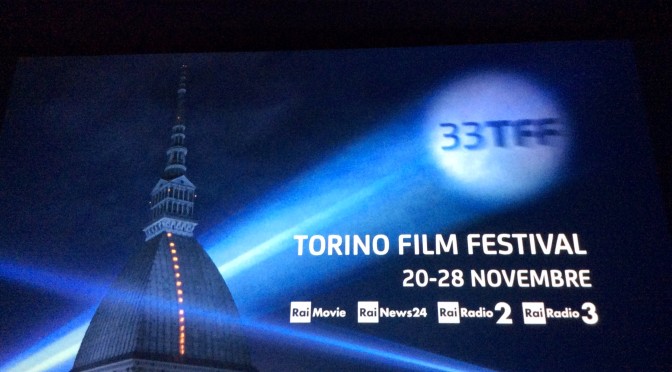Article by: Elisa Carbone Translation by: Sema Udmir
Young, lively, dynamic and, I would add, confident.
These are the adjectives that were most frequently heard during the dynamic and cheerful press conference for the second biggest Italian movie event of the year. This 33rd edition of TFF was opened by the Saxophone Ensemble of Conservatoire G. Verdi in hall 2 of Cinema Massimo playing the famous Indiana Jones theme song, which was enthusiastically cheered by journalists and representatives of the most important Turin institutions.
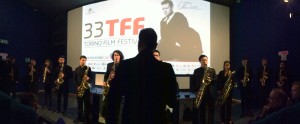
Young is probably the most appropriate word to describe the TFF, since the work presented are often the first, second, or at most third of their directors, who are usually independent. The section “Onde”, in particular, with its co-curator Roberto Manassero, has always dealt with extreme innovation, both thematic and technical. As usual, this year “Onde” selected 15 films among different formats, Super 8 mm film, Super 16, VHS, digital films and videoart contaminations. The search for innovation has also been confirmed by TFF Doc’s curator, Davide Oberto, who explained that “all sections are based of new independent talents to be explored”.
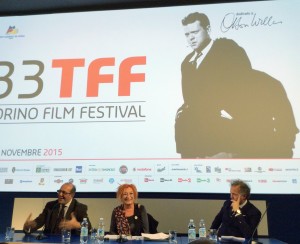
Enthusiasm marked every speech during the press conference, included that of Director Emanuela Martini, who started by pointing out TFF’s several partnerships with important institutions of Turin, which had been established in the past or in recent years and will be part of the event this year too.
Among them, she underlined the collaboration with Circolo dei Lettori and RAI. The local cultural centre wil host a two-day pre-festival event focusing on science fiction readings. (Pincio racconta Dick and 1984) whereas the Italian public television broadcaster RAI will welcome TFF staff within its historical buildings and will be promoting the event during the festival by broadcasting a self-produced spot on its channels. The new director of RAI headquarter in Turin, Pietro Grignani, confirmed how essential such a concrete collaboration is, being both partners cultural companies and sharing a common identity.
Paolo Damilano talked about a “metropolitan” festival, in the sense that it wil get the whole city talking about cinema” and, speaking of that, Maurizio Braccialarghe, Councillor for Culture of the city of Turin, confirmed the constant tendency to make Turin a city of arts and evolution of techniques. particularly when it comes to cinema. As usual, the Sandretto Re Rebaudengo Foundation, represented by its President, Patrizia Sandretto, is also on the front line amongst collaborations with TFF and this year it will even curate and host a subsection of the “Onde” section, ARTRUM: short films of a phantasmatic nature set in post-apocalyptic landscapes, all relating to contemporary art.
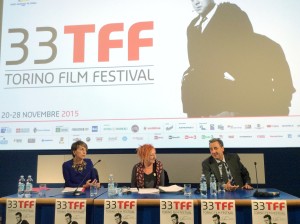
After introducing TFF’s several important partners, the press conference came to the heart of the matter: a short review of the festival movies and their connected events.
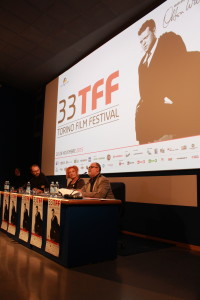
Aside from what had already been publicly disclosed, such as the homage to Orson Welles , the pre-opening film by Pietro Marcello and the opening film Suffragette, both the Director and the two curators of the film festival revealed a lot of information about this edition. There will be 15 films competing this year, 4 of which are Italian. For the section Festa Mobile, the Gran Premio Torino will be assigned to the English director and screenwriter Terence Davies for his Sunset Song. In the same section the artistic director made special mention of the movie by Gianni Zanasi La felicità è un sistema complesso (Happiness is a difficult system) and the main actress Hadas Yaron, awarded as best leading actress in Venezia film festival and Torino film festival 32 playing in Felix et Meirà.
There will also be the Cipputi Prize, celebrating 20 years from its foundation, and this will go to Francesca Comencini for her short feature movie In fabbrica (In a factory). The Maria Adriana Polo Lifetime Achievement Award will go to Lorena Mazzetti. Two of her films, K and Together will be played during the festival. This year the guest director will be Julian Temple, who loves Torino film festival and used his latest movie The ecstasy of Wilko Johnson (guitarist of the band Dr. Feelgood, terminally ill with cancer, saved at the eleventh hour by an operation) as a starting point to regroup seven movies, all linked together by a macro theme: Questioni di vita e di morte, where the protagonists are exactly these two unavoidable presences, which make human beings just what they are. “About dystopia and surreal” are the words that best define the retrospective, which is starting in this edition and will be continuing in the next one: Cose che verranno. La terra vista dal cinema, under the direction of Emanuela Martini, is the section dedicated to science fiction and to impossible or catastrophically future worlds, where in the battle between utopia and antiutopia, is the second one which unluckily wins.
Davide Oberto, the curator of TFF doc, then talked in detail about the themes of the films proposed for the Festival. In addition to the usual subdivision between International.doc and Italian.doc, the will be a focus on Mediterranean, seen not only as tragic and a protagonist in the current affairs, but also as a source of creativity (9 films in this subsection). In addition, there will be several special events such as screening of Fondo Mossina Miss Cinema shot on 16mm that shows us unexpected portraits of hopeful young people from 1942 to 1952 and the screening of two Chantal Ackerman’s films.
Finally, the Director of TorinoFilmLab Savina Neirotti presented the 8 selected films and clearly restated the importance of the didactic aim that lies at the basis of this creative community. Pride of place was also enjoyed by the restored versions of Terrore nello spazio and Tragica Alba a Dongo, a short film that was once banned and thought lost, which portrays the final hours of Mussolini in Dongo, in a quick overview presented by Emanuela Martini.
Liveliness and dynamism are the adjectives that best describe the sponsor of the event, Chiara Francini. The actress was specially appointed taking into consideration the image this festival aims to convey for its 33rd edition. The awareness of last year’s big success (which made it possible to have 11 theaters available this year) gives the organizers of this festival the right confidence and the possibility to rely on a widespread public approval.

